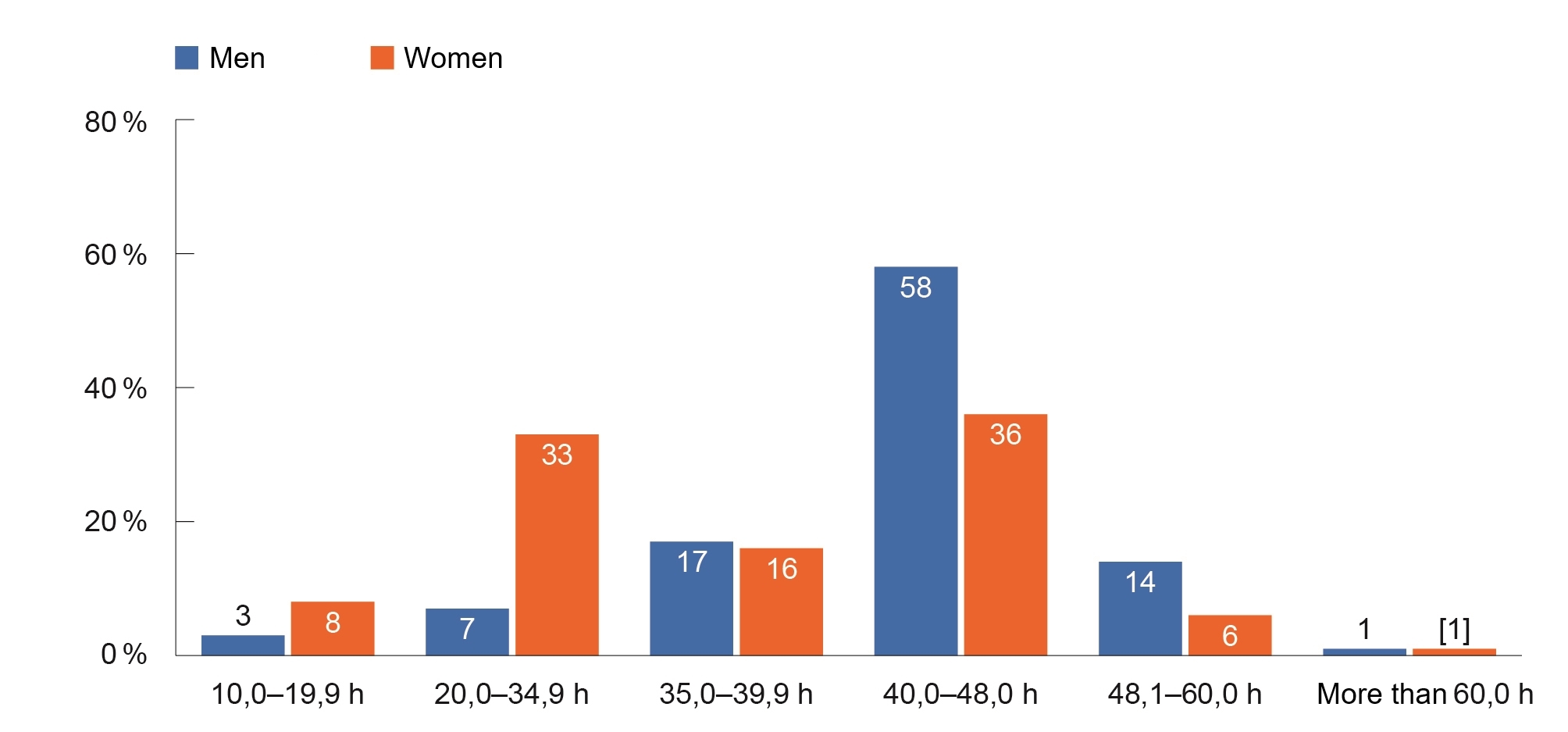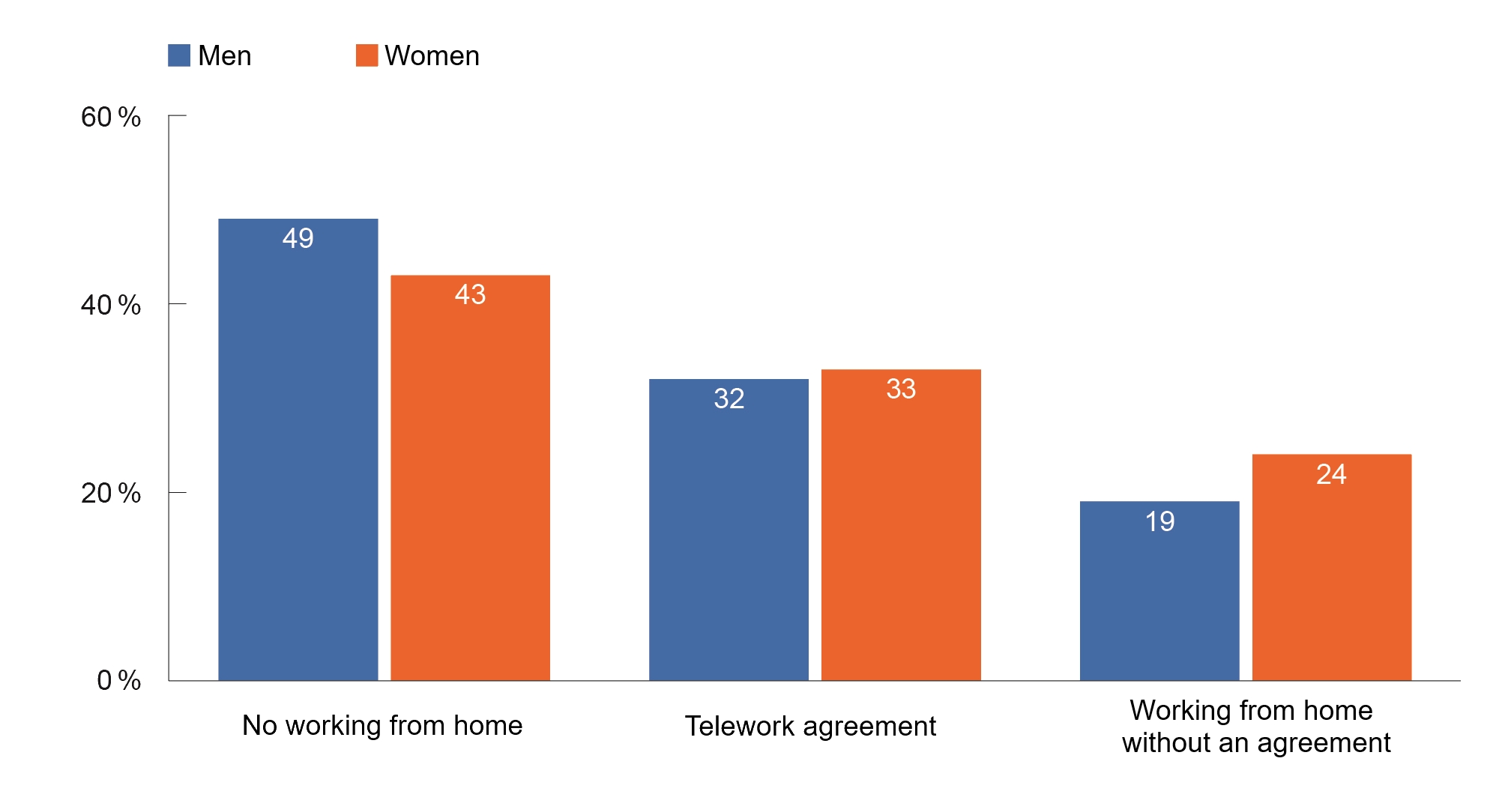Figures, data and facts on the organisation of working time
The organisation of working time is one of the core topics of occupational safety and health. It also determines the amount of time available for recreation and private matters. Given the changing requirements in the world of work, the regulation and organisation of working time are the focus of the political, economic and public debate in Germany. With the BAuA working time survey, the Federal Institute for Occupational Safety and Health (BAuA) provides an empirical database for this debate.

In the course of this representative panel survey, about 20,000 members of the German workforce were interviewed in 2015, and more than 10,000 individuals took part in the second and third wave of the survey in 2017 and 2019. In 2021, 20,000 respondents were interviewed. The data provide differentiated information on the actual situation regarding the working time of employees and self-employed persons and allow for an assessment concerning questions related to working time arrangements and working time flexibility. Furthermore, the data are used for scientific research on the correlation between working time and health as well as the well-being of employees. The results are published in various reports. Further details regarding methodology and questionnaires can be found in the methodology reports for the surveys.
Working time duration
Employees in Germany work an average of 38.4 hours. Full-time employees have an average actual working time of 43.0 hours per week and thus work an average of 4.3 hours more than contractually agreed. Men are most likely to work long full-time hours (40–48 hours: 58%) and significantly more likely to work extra-long full-time hours (48.1–60 hours: 14%) than women (6%). Women are also most likely to work long full-time hours (40–48 hours: 36%). However, they also frequently work long part-time hours (20–34.9 hours: 33%). The distribution of working time duration for men and women is also shown in the following figure.
Advantages and disadvantages of flexible working time
In 2018, the 8-hour working day celebrated its 100th anniversary. However, the work of many employees is characterised by flexible and atypical working times. Even though in 2021, 80 per cent of employed persons stated that they usually work between 7 am and 7 pm, 39 percent of employed persons also report that they work on weekends at least once per month. 22 percent further stated that their work environment expects them to be available for professional matters during their free time. In fact, 13 percent of employees are often contacted regarding professional matters outside of working hours; a phenomenon much more likely to occur to managerial staff than for employees without leadership responsibility.
Flexibility options for employees have increased significantly compared to 2019. Almost half of the dependent employees can influence when they start and end work (46%), more than half can influence when they take hours off (52%), and two-thirds can control when they take vacation or days off (66%). At the same time, one-tenth of employees frequently experience short-term changes in working hours due to company concerns (10 %).
It also becomes apparent that employees with high flexibility demands, such as changes to their working time at short notice, tend to rate their health situation worse and are less satisfied with their work-life balance than other employees. Inversely, employees' possibilities to influence working time organisation, as well as predictability and foreseeability of working time, go hand in hand with better health and a better work-life balance.
Shift work affects about 1 in 6 employees. 8 percent of employees work rotating shifts without night work, 7 percent work alternating shifts with night work and 1 percent work permanent night shifts. Shift work is associated with conflicts on the compatibility of work and private life and with adverse effects on health.
Telework and working from home
In the wake of the SARS-CoV-2 pandemic, the proportion of employees working from home (teleworking and home office) has increased significantly. On average, while a greater proportion of women (57%) than men (51%) work from home in 2021, they do so more often without an agreement. With agreement, about one-third of men (32%) and women (33%) work from home (see figure). While the proportion of men with a telecommuting or home office agreement was larger until 2017, by 2019, about an equal proportion of men and women had a home office or telecommuting agreement.

